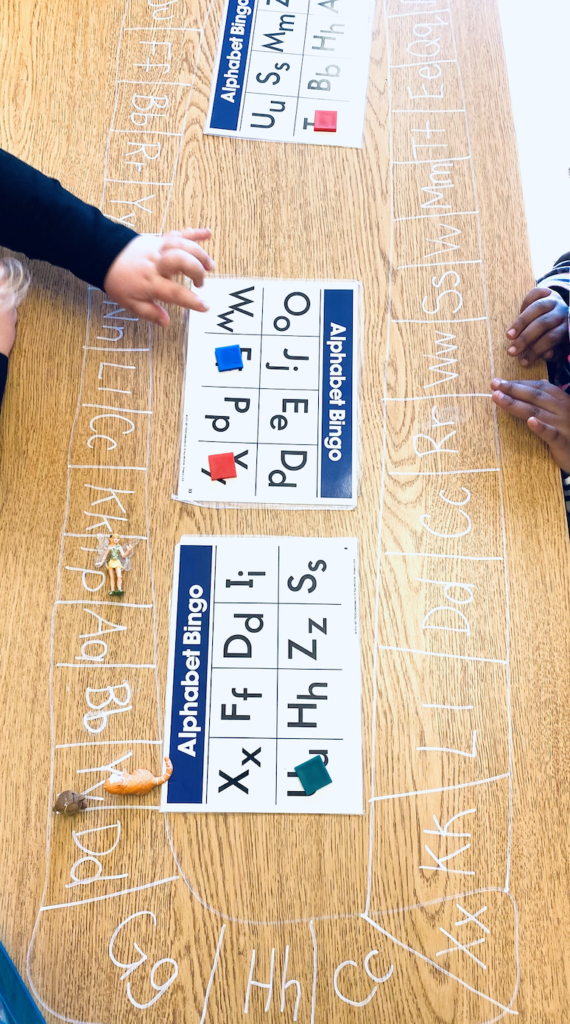Home » Making Games Adaptable
Posted by:
Categories
Date
Educators are forever creating and coming up with new ideas. What if we told you that you can use one idea and adapt in multiple ways?
Whenever we are coming up with a new idea for a game, we try to keep it as open ended as possible so that we can recycle the idea in different ways or differentiate the game in the moment to make it developmentally appropriate for the students who are interested in engaging.
What does that actually look like? Let’s take a peak.
Here is a simple game: Race to 20
What do you need to play? 2 cars, dice, and a race track (could be drawn on larger paper or built using blocks).
How to Play? Roll the dice, move the car!
That’s it? That seems too simple. It’s true, but simple allows for lots of extensions or adaptations.
Some children will benefit from the simplicity of rolling and moving (1:1 correspondence, turn taking, recognizing different dot patterns).
Other children will benefit from educators differentiating the game with something as simple as changing the dice (do you have dice with numerals? dice with different dot patterns? could you use more than 1 to encourage addition?).
Adapt/Extend: Add another car so that each student has to get both cars to the end, but if the cars land on the same space they have to go back to the beginning! Add special spaces that require students to move backwards or miss a turn.
Educator Extensions: Being involved yourself can also change the way that the game is engaged with.
Educators can pause the game to ask questions: How many more do you need to get to ____? How many squares are you ahead of/behind _____?


Alphabet Game:
Literacy is an area of the curriculum where we see big variations in where children are at in their learning. Some children are reading, some are able to recognize letters, and some children are not yet there.
We set up this simple game on a table where we drew a game board and added different letters to the squares.
How to Play: this depended on who was interested! We adapted this game in many different ways to support the children’s development.
Variation #1: Children rolled and moved around the board. If they landed on a letter and it was on their Bingo page, they would add a square! First student to get 4 in a row, wins!
Variation #2: Find your name! Students would use their name card or write their name on a whiteboard. They would roll and move around the board. The first student to land on 3 letters from their name wins!
Variation #3: Add a basket of magnetic letters. Students choose 2-3 letters. First student to roll and land on the letters they chose wins!
Variation #4: Roll and Write. Students roll the dice and write down the letters on their whiteboard. Race to the finish line and see who writes the most letters!
Variation #5: Roll, Write and Build! Students roll and move around the board. The first students to build a word out of the letters that they record wins (e.g., cat, the, me).
When we set out games that allow us to differentiate in the moment it takes away limitations, saves us time in creating multiple ideas, and allows for us to engage with many more students regardless of where they are at developmentally!
Sign up for our mailing list if you would like to stay connected, learn about new ideas that can be implemented in your classroom, get access to exclusive material and offers.
We respect your privacy.
Copyright 2019 – PCE Connecting Learners. | Designed & Developed by BrandCo House.
